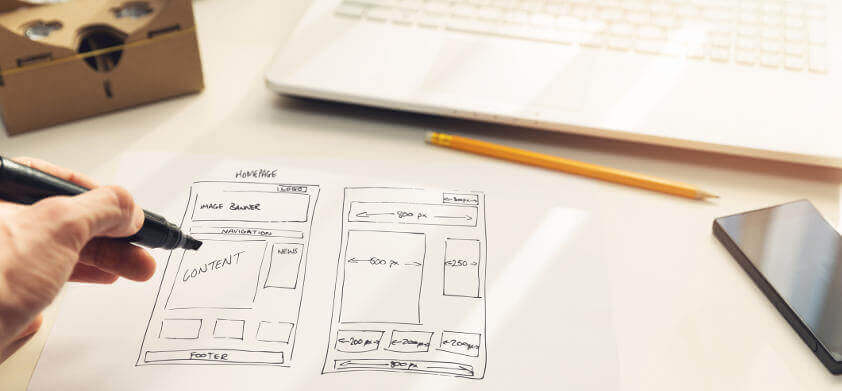Due to the nature of consumer buying behaviors, it’s not easy to design a website these days. It must be informative, mobile-responsive, load fast and properly reflect your brand. Whether you try to do it on your own or hire an expert, the progression from planning to building to launching is a long one. We’ll discuss the process so you know what to expect.
Preparing to Design a Website
Determine the Goals of the Site
Different businesses have different needs, and the same goes for web design. Before you design a website, you have to determine its goals.
For example, you may have an ecommerce business that relies entirely on its website to sell products. Or, you may just need a five page, informational website that gives your business a presence in the digital realm.
Think long and hard about what purpose you want your website to serve. It’s never a good idea to figure it out as you go.

Define the Scope
After you’ve figured out the site’s goals, it’s time to define its scope. In other words, what exactly will it consist of?
You’ll likely need an “About” page that describes your company’s history. Certainly a “Services” page that explains what you do. Also a “Contact” page so people can get in touch. Possibly a blog. These are all things to consider before mapping it out.
Building the Site
Create a Sitemap and Wireframes
In the sitemap and wireframes portion of website development, the way in which the site’s visual features and content interrelate will be determined.
Essentially, you’ll have a rough-ish blueprint of what the finished site will look like. It most likely won’t include specific visuals or written content, just placeholders so you can get an idea of how the site will look and function.
Add the Visuals
Once the sitemap and wireframes are squared away, it’s time to get the visual portion in place. This includes colors, typefaces, graphics, photographs, logos, infographics, videos and any other visual elements the site requires.
Content Collection
Your website’s written content should resonate with your target audience. In other words, it should not be boring or littered with industry-specific jargon. Ever page should be written with a specific goal in mind.
You don’t have to be the next Great American Novelist to produce solid website copy. However, it certainly doesn’t hurt to hire a professional content writer, especially since they’re likely SEO experts as well.

Testing
After the visuals and content are in place, the site is almost done. Each page should be tested to make sure there are no spelling errors, that all links are working and that everything properly formats to all devices and browsers.
Launch and Post-Launch
Taking the Site Live
The moment you’ve been waiting for. Site launch. Finally, the world can see your business’ beautiful new website!
Routine Maintenance
Keep in mind that once your website has been launched, it will still encounter issues from time to time. Not only that, but as technology and SEO best practices change, you’ll have to maintain it routinely.
Clearly, it’s not easy to design a website. It’s a long, painstaking process, but it’s worth it in the end when your business has a beautiful, new digital face. And remember, enlisting the help of a professional makes it much easier!


